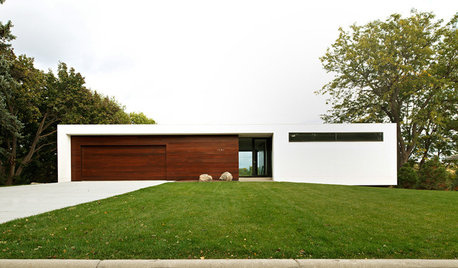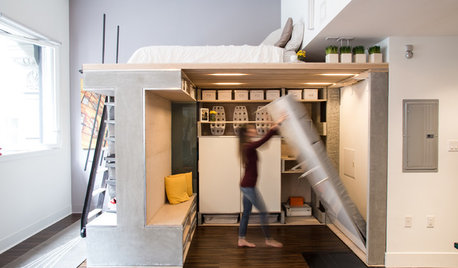Need plants that won't die, no matter what happens to them.
marie99
17 years ago
Related Stories

REMODELING GUIDESYou Won't Believe What These Homeowners Found in Their Walls
From the banal to the downright bizarre, these uncovered artifacts may get you wondering what may be hidden in your own home
Full Story
LANDSCAPE DESIGNThe 7 Best Plant Types for Creating Privacy and How to Use Them
Follow these tips for using different kinds of plants as living privacy screens
Full Story
LIFEYou Said It: ‘Put It Back’ If It Won’t Help Your House, and More Wisdom
Highlights from the week include stopping clutter from getting past the door, fall planting ideas and a grandfather’s gift of love
Full Story
ARCHITECTUREWhy Authenticity in Architecture Matters
Is your home's exterior making a promise it doesn't keep? Learn why integrity and consistency are essential for architectural success
Full Story
FURNITURE12 Sofa Colors That Won't Box You In
With any of these colors as a base, you can change your decor as often as you change your mind
Full Story
SMALL SPACESHouzz TV: You Won’t Believe Everything This Tiny Loft Can Do
Looking for more floor space, a San Francisco couple hires architects to design a unit that includes beds, storage and workspace
Full Story
GARDENING GUIDESGot Frost-Damaged Plants? How It Happens, and When and How to Prune
Crispy brown leaves are a sure sign that Jack Frost has been to your neighborhood
Full Story
GARDENING GUIDESOrganic Matters: Thwart Insect Pests With Trap Crops
Add a few sacrificial plants to your garden to lure insects away from the harvest
Full Story
HOUSEKEEPINGWhat's That Sound? 9 Home Noises and How to Fix Them
Bumps and thumps might be driving you crazy, but they also might mean big trouble. We give you the lowdown and which pro to call for help
Full StoryMore Discussions







Lavoie Boho
aisgecko
Related Professionals
Middle Island Landscape Architects & Landscape Designers · North New Hyde Park Landscape Architects & Landscape Designers · Saint Louis Park Landscape Architects & Landscape Designers · Washington Landscape Architects & Landscape Designers · East Haven Landscape Contractors · Edinburg Landscape Contractors · El Sobrante Landscape Contractors · Elkridge Landscape Contractors · Fair Lawn Landscape Contractors · Fuquay-Varina Landscape Contractors · Lake Saint Louis Landscape Contractors · Plymouth Landscape Contractors · Secaucus Landscape Contractors · Wayland Landscape Contractors · Webster Groves Landscape Contractorssurrealgarden
dottie_in_charlotte
Hollyclyff
marie99Original Author
joefalco
K
zebrina
Claire Pickett
trianglejohn
mrsig
tamelask
Bumblebeez SC Zone 7
amyflora
DYH
Dibbit
tamelask
brenda_near_eno
dellare
jordyn_roadrunner_com